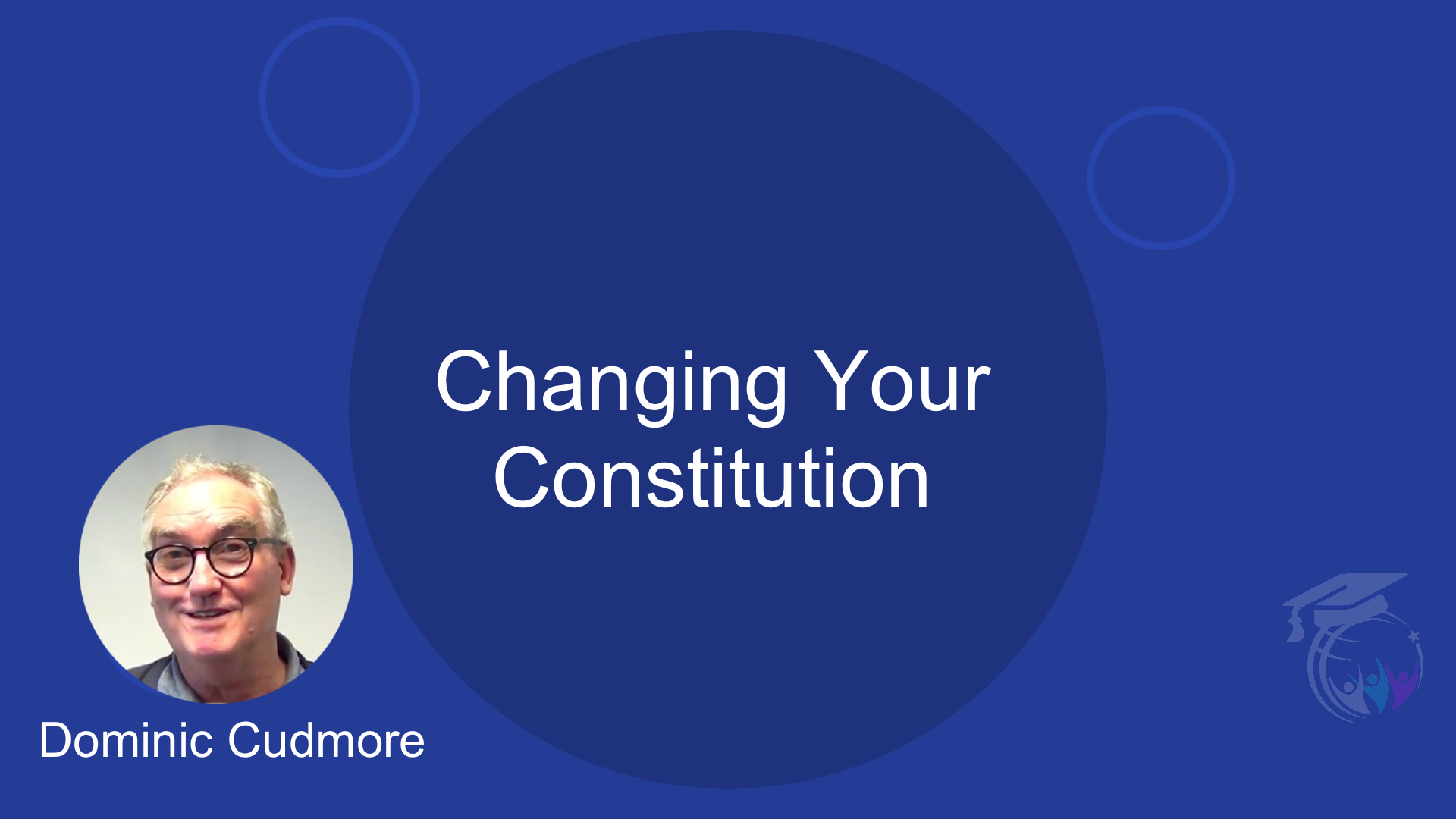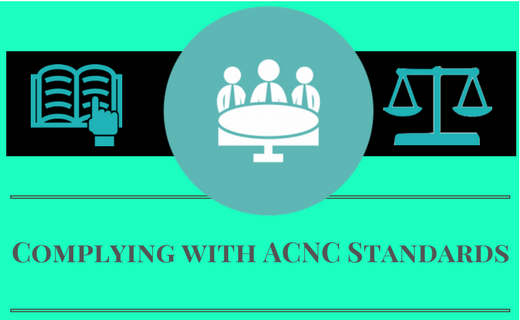Understand and explore the governance and management structure of organisations.
Authored by: iClick2Learn Team
Translate Text
– Okay, so Governance 101. We’re talking about the types of legal structures there are in Australia. And what I’ve done is I’ve actually broken it up to the legal landscape, if you like. So we’re actually looking at Commonwealth and state legislation. Now, the first question might be, well, does my organisation actually need to have a legal structure? Do we actually need to incorporate, as it’s known? Well, no, not necessarily. The thing though, is you need to be aware of the risks, if you don’t have a legal structure to protect you. I use this analogy of saying to people that are looking at legal structures, I want you to think about we’re about to walk over a great divide. So we’re on the cliff face and we need to reach the other side of the big ranges and we have a bridge. But what does that bridge look like? And how solid is it? Is it actually going to protect us? Can we make it? Is it a rickety old bridge? Does the bridge not even exist? Not having a legal structure, to me, is like not having a bridge, because there’s actually nothing that’s going to protect you as an individual.
We have two types of law. We’ve got the statutory law, and then we have common law. So statutory law is set by government and it’s about, you know, yes, it’s about you’ve got to do this and you can’t do that, but it’s about protection of the individuals. So in this case, it’s about the organisation where you’ve got common law, which is about the individuals. And the issue is if you don’t have a legal structure that protects you, you are no longer considered under statutory law. You’re considered under common law. And unfortunately, what this means is, you know those horror stories you hear about people losing their homes, et cetera. You are certainly risking it. Now, there are other ways to look at perhaps an auspicing relationship, et cetera, rather than having to go through the process of incorporating. But my question to you is make sure that your members and yourself is protected under some sort of organisational structure that is covered under statutory law. So we’re going to have a look at statutory more here using the Commonwealth. So under the Commonwealth of Australia, we have in a non-profit sense, we have essentially two types. We have the Corporations Act. Some of you, when you think Corporations Act, you might be thinking, you know, your big companies. Your Harvey Worlds, your Telstras, et cetera. But for nonprofit organisation, the legal structure is limited by guarantee, okay? So that’s a company limited by guarantee under the Corporations Act is the nonprofit status. The other one we have, and this is only appropriate for Aboriginal and Torres Strait Islander organisations is what we call the CATSI Act, so that’s the acronym. So the CATSI Act, which is the Corporations Aboriginal and Torres Strait Islanders. So they’re the two types of acts that we have at a Commonwealth level.
But then we also have the state level. Now, just before we move off on Commonwealth, I’ve just a note on regulators who actually oversees these acts. Well, ASIC, the Australian Securities and Investments Commission, who I’m sure many of you have heard actually oversee the Corporations Act, where ORIC, which is the Office for Registering Indigenous Corporations oversee and help Aboriginal and Torres Strait Islander groups with compliance of the CATSI Act. So let’s look at state. Now, the regulators at state, obviously, differ. You know, we have… Let’s just say New South Wales Fair Trading. We’ve got Department of Commerce in Western Australia. I work across a lot of different states delivering governance, so I need to actually be very aware of the different legislation that applies. For yourself, you need to be aware of what legislation that applies as to where your head office and your operations are, okay? So there are different state acts that actually do apply other than these. And what I’m talking about, for example, is the Fundraising Act, because that’s a part of your operations. Now, you may have heard, if not, there’s a great article on Pro Bono Australia about the cost to charities, because they’ve actually had to make sure that they had an authority to fundraising, every single state to make sure they were compliant in every single state. But a legal structure and operational legal structure or organisational legal structure is different. You only need to have one. However, if you’re actually delivering services, let’s just say, I’m an organisation that’s in Queensland, but I also deliver services in New South Wales and I’m planning on having an office there. Then you should actually start talking about is it appropriate for you to actually move to a Commonwealth legal structure rather than having a state-based legal structure? Look, that’s not just one consideration. When you look at your legal structures, there is a whole range of questions you need to ask. The purposes of this quick session is showing you the different legal structures and explaining some differences. So at a state level, we have the Associations Incorporations Act.
Now, every state has an Associations Incorporations Act at varying levels. It is now January, 2015 and the Western Australia Associations Incorporations Act is going to be implemented in the next couple of months. I believe it’s passed Western Australian Parliament. If not, it’s not too far away. New South Wales updated their Associations Incorporations Act in 2009. So obviously, I haven’t put that year here because for every state it’s different. So we have these Associations Incorporations Act. For many of you, this is probably a very familiar place. You look at a lot of service clubs. You look at a lot of your soccer clubs, your sporting clubs, your sort of charities. A lot of those organisations are under this act. The other one we have is a Co-operatives Act. Now for a non, sorry, a nonprofit co-operative. Now, some of you are probably thinking, but isn’t that like Farmers’ Co-ops and the farmers actually get the profit? What we’re talking about is a nonprofit status. There are two types, just like there is with the Corporations Act. It has a for-profit and a not-for-profit. So do the Co-operatives Act. What you look at here is the non-trading co-op, okay? So a nonprofit… Look, I’ll give you two examples of a non-profit non-trading co-operative. And the key difference here is that that is usually by shares. So that’s a shareholder, where your Associations Incorporation Act is members. So two examples. An independent radio station. It’s very common. And now our example, and just because I just love saying the name of this town, Yackandandah in Victoria. Yackandandah have a non-trading co-op, which is their petrol station that they run. So they’ve got a couple of operations. I heard recently they also bought the gin factory. But they started their non-trading co-op because they were about to lose their petrol station. So that’s non-trading non-profit for the benefit of the community. So the other thing to be aware of is don’t just automatically assume because you’re involved in a non-profit, that you’re in their state organisation, state legislator and they report to, as I said, New South Wales, Department of Fair Trading, Western Australia, Department of Commerce. Don’t just assume that there are under the Associations Incorporations Act. Ask a question because they might actually have their own act. I’ll give you an example of somebody or an organisation that has their own act. Let’s just say you get involved in the Anglican Church or the Uniting Church, Baptist Church, pick any one of those, they all have their own acts. Another one might be the Country Women’s Association. You know, the CWAs. So they have their own state acts, a lot of them. If not all, I haven’t worked with everyone in every state. So just make sure that you know the organisation that you’re going to be sitting on the board for, you’re going to be volunteering, make sure you know that it does have an act and what that act is. So really critical pieces of information for you to ask. Number one. Is the organisation incorporated? Any fees? The second question you want to ask is what act is it incorporated under? And the third question is can I have a copy of the constitution? Now, if you’re a board member, you need to take due diligence to the next level and ask what your incorporations number is. And you might even want to check that. Now, some of you’re thinking, yeah, that’s probably a little bit over the top, but let me just give you a very small example of where making sure that you’re evidence-based with information is important. So I was asked to help a small park committee. Local council came to me and said they can’t get grants.
And they’d think grants were a waste of time, but we’d really liked them to develop this, in this case, it was a park, so it was a park committee. We’d really like them develop the park further. So on my first discussion with them, the very first meeting I asked these questions. Are you incorporated? And they couldn’t… So we got through all the yes, yes, yes, but they couldn’t tell me the incorporations number. So I said, that’s okay. It’s fairly simple. We’re in New South Wales, there’s this organisation, just go down and ring further training or go down and see them and ask for the incorporations number. It turns out that the organisation was no longer incorporated. So it’s no wonder they were having problems getting grants. When it’s very clear when you applied for those grants, the eligibility criteria was that you must be a legal entity, a non-profit under a non-profit incorporation structure. So that’s what’s really important. Not only can you attract revenue, but you can also make sure, importantly, that yourself, your members, other volunteers, or other volunteer board members are protected under a legal structure.
Related posts
Developing a Fundraising Plan
Legal Structures
Membership Application Form
Committee Nomination Form
Changing Your Constitution
Legislative and Good Practice Constitutional Changes for WA Associations
Legal Responsibilities of Committee Members
- Tags | Boards and Committees, Governance, Legals








